Updated 04-01-15.  Americans may look at instant ramen noodles a little funny, but in truth these cheap dry noodles in a cup or a bag play a very important part in sustaining the Asian families especially during hard times. The Japanese love noodles as much, or maybe more than anyone else, so it's no surprise a Japanese named Momofuku Ando invented instant ramen back in 1958. Today Vietnamese pho gets the same instant treatment in the form of instant pho, or phở ăn liền (ready-to-eat pho.)
Americans may look at instant ramen noodles a little funny, but in truth these cheap dry noodles in a cup or a bag play a very important part in sustaining the Asian families especially during hard times. The Japanese love noodles as much, or maybe more than anyone else, so it's no surprise a Japanese named Momofuku Ando invented instant ramen back in 1958. Today Vietnamese pho gets the same instant treatment in the form of instant pho, or phở ăn liền (ready-to-eat pho.)
But first a few words about the instant ramen itself. Asians know that instant ramen is imitation noodles so there's no point criticizing it. For Asians living in Asia, instant ramen can be cheap and quick meals when you can't have the real thing - due to a variety of reasons, economic included. For Asians living outside of Asia, particularly in Western countries, instant ramen stands for something quick and dependable until the real meal. Instant ramen is the self-serve Asian fast food, and to most Asians, it is the comfort home food, pretty much in the same way peanut butter and jelly sandwich is to Americans. Except that many adult Asians enjoy eating it too. Nowadays my guess is it's also a popular college dorm food.
Instant Pho
There is a reason why instant ramen, and instant pho, took the world by storm. In today’s fast-paced life, instant ramen caters to a need to feed and satisfy hunger in less than five minutes. After all, all you need to do with instant ramen is to boil the noodles in water, add the contents of the packet of seasoning, and voila! In recent years instant ramen even comes in foam cups or bowls where the only thing you need to do is to add hot water and let it sit for a few minutes. Witness the Cup-Noodles popularity.
So instant pho is riding the instant ramen momentum. In fact many Vietnamese dishes do get the instant treatment, including the rice porridge! In many Asian supermarkets and grocery stores, you'll find sections full of instant ramen offerings. Pho bo, pho ga, pho chay (vegetarian version) are all available. For the large Viet consumer segment in the U.S. (and I would guess the same for Australia and Europe) instant pho and other Viet-dish based instant varieties are now the top choices.
 |  |
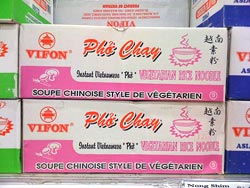 |  |
Preparing Instant Pho
Preparation, what preparation? It's instant pho! With modern convenience, all you need is hot water and 3-5 minutes of your time. Actually, your instant pho experience can be greatly enhanced by adding freshly chopped green onions and cilantro before "cooking" it. Also there's no question about instant pho's authenticity or taste - it's not authentic but you can still taste traces of pho from it. Many people add other ingredients to increase their eating enjoyment. My personal favorites include broccoli or a variety of different Chinese cabbages like bok choy, and leftover Chinese BBQ Char siu, if you have it.
Instant Pho - the Good and the Bad
Now, the question is: Is instant pho bad? The answer is: Not necessary.
Here's how I look at it. If you treat instant pho like a snack, then it does its job pretty well - all snacks are bad anyway. If you see instant pho as your last resort, then it is great and you're thankful they made such cheap foods! And if you consider instant pho "junk food," then having a little guilty pleasure occasionally is okay too. The smart instant pho eater (or of any instant ramen for that matter,) however, do look out for the amount of servings, fat and sodium in each package. Here's what I mean.
If you look at the Nutritional Facts very very closely, you'll see what you're really consuming. In the first sample below, each bowl contains 2 servings, with 380 calories, and 110 calories from fat! Furthermore, you're also getting 12g (18%) Total Fat, 6g (30%) Saturated Fat, and a whopping 2472 mg (104%) Sodium in every bowl! Pretty sneaky that they use 1/2 bowl serving size. I've seen 1/3 bowl serving size labels!
In the next sample, each bowl contains 1 serving, 280 calories, and 110 calories from fat. You're also getting 12g (18%) Total Fat, 6g (30%) Saturated Fat, and 1950 mg (81%) Sodium in every bowl. A little better, but still pretty bad.
So the question is not if instant pho is good or bad, but if it is good for your health. Eating too many of these bowls (and other instant ramen) will probably kill you faster than the time it takes to debate whether they taste good. Remember that scene when the Sundance Kid says "I can't swim," and Butch Cassidy says "Are you crazy? The fall will probably kill you!" The sodium (MSG) itself is not as bad as many people make it out to be, according to the Mayo Clinique and the FDA "What is MSG? Is it bad for you?", but the amount packed in there is way over the top.
Vietnamese culinary author Andrea Nguyen did a taste-off of instant pho available in Asian markets in her community. What was her conclusion? It is that instant pho tastes somewhat more authentic than instant ramen, and that she would not mind keeping a stash of instant pho in her cupboard if she wants a quick fix.
I, and I'm sure many others, do the same thing too.
Originally published 07-31-09.

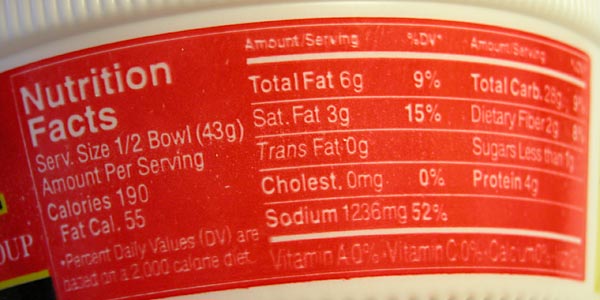
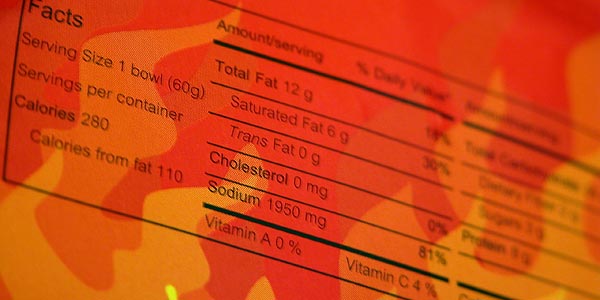
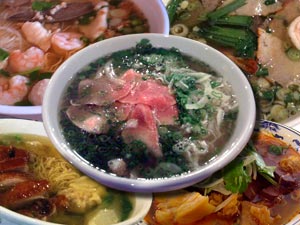
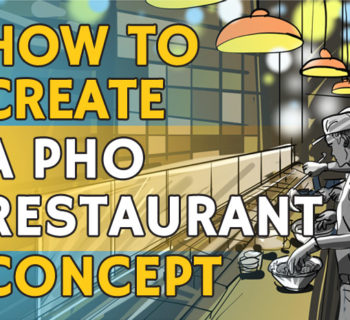
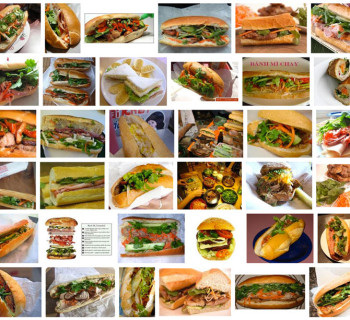
That sodium amount is just insane! Do you happen to have any idea what average lvls of sodium would be in a real bowl of pho? I am sure it still isn’t “good” for you (nothing besides water and lettuce seems to be “okay” to eat anymore, sheesh) but I am guessing the sodium and other “bad thing” levels would be much lower. Plus, it just tastes way better.
🙂
Yeah no doubt a restaurant pho bowl would have high level of sodium and fat. Here’s something from livestrong.com based on some recipe that is not shown. Everything looks good but I don’t believe the sodium number. And the total calories seems too low for a typical bowl.
Nutrition Facts
Serving Size: 1/8 recipe / 619g
Amount per Serving
Calories 367
Calories from Fat 52
% Daily Value *
Total Fat 6g (9%)
Saturated Fat 2g (10%)
Cholesterol 35mg (12%)
Sodium 384mg (16%)
Total Carbohydrate 51g (17%)
Dietary Fiber 2g (8%)
Sugars 0g
Protein 24g (48%)
Vitamin A 4%
Vitamin C 10%
Calcium 4%
Iron 20%
Here’s another interesting discussion on chowhound. No quick answers.
Yeah, that is like half or less of the normal bowls I see. It is somewhat important for me, as I have blood pressure issues as well as a serious pho addiction. 🙁 I have to ration myself to only 2 or so bowls for lunch a week. Heading out for some pho ga today, actually. 🙂 Tried some hiu tieu (spelling) last week, as well and was very impressed. It had little wonton / pot sticker things in the soup and was delicious. Also, tried to order my pho tai bo vien by name rather than number this week. The server got a kick out of it, as I am about as anglo as you can get. She said I did a good job with pronunciation. 🙂
“Blood pressure issues” vs. “serious pho addition.” Man I feel for ya. Not fun when you can’t have or have to limit pho intake! On the positive side, it’s healthier than many other foods so, go ahead, have a large pho ga today.
By the way it’s hu tieu, and it has many faces (see hu tieu if you haven’t read it.) One of my fav foods too, especially the one with wonton like you mentioned. What I really like is the xui cao (like wonton but with shrimp and much tastier.) I’m so glad you’re ordering in Vietnamese. Restaurants’ gonna flip when all their American clients start ordering strictly in Vietnamese – that would be funny.
Hah, yeah I did spell it wrong. I actually tried it because of your article. I had already tried bun bo hue and bun rieu on my own, both of which are tasty and so much different than pho or hu tieu. I am not to the point of ordering in Vietnamese at every restaurant yet, just at some that I frequest the most. One of the best places in town for pho has some very grizzled older looking servers that I can’t tell if they would think I was making fun of them or not. Anyway, great page for info on these foods and the cultures behind them.
Ahh don’t worry about the old servers. They’ll get a kick out of your speaking Vietnamese. Glad you like those other noodle dishes. But do you agree that pho has more appeal to Western tastes, while the others need acquired tastes? I like them myself too but when it comes to choices, pho always wins hands down ;P
I do agree about some of the other dishes being a little more difficult for a westerner to enjoy. Some of the flavors are so bold, such as the fermented shrimp paste, that it is a bit more difficult. I notice, though, that the restaurant folks are impressed by someone like me (6′ 5″ white guy) trying some bun bo hue with shrimp paste and congealed blood, than just eating pho all the time. I also just try whatever the server recommends sometimes, but only at a place where I go quite a bit and the server knows me. That has lead to some great food, but I am a fairly adventurous eater.
You’re a brave soul. And it’s great what you’re doing. There are zillions of other ways something like shrimp paste can be used in other dishes, many of which I myself normally won’t touch 🙂 In the end, though, we all have our biases, and what works for each individual is all that matters. The main differences you see in the foods are all mainly due to regional variations, so if people are aware of this possibility on the way in then they will have a more “pleasant” experience.
And you’re right, if you find a place you like then building a relationship is great. Not many non-Viet people know this, but the servers do discuss about who they served andreally appreciate a knowledgeable client like you.
Though I wonder. Do you have the urge to keep trying new things in hope to discover another gem, or do you normally stay “safe” even though an adventurous eater?
Some days, i just like to “keep it safe” and go for a big bowl of standard pho. Other days, i ask what the server thinks is good, and go for it. I am not up to the levels of those guys on the T.V. shows that will eat darn near anything, but I like to keep trying new and interesting stuff.
Sadly, barring a few standard meat and rice dishes, most of the menu has been covered. That was why I started asking about the specials, which sometimes are not on the menu. Still haven’t had anything that wasn’t at least good, though I did try some ladna (I think) at one place, big 1″ wide thick, slippery, rubbery “noodles” that wasn’t really my thing. Too hard to eat. Do you have any recommendations on new things to try?
Not sure what you meant by “ladna” but if you’re looking for new things Vietnamese to try, I would say the broken rice dishes, or if you’ve done that then try dishes such as banh cuon, banh xeo, various others as described in this post http://thefoodaddicts.com/?p=837 as a start.
I never minded mi goi if it was doctored up a bit with fresh ingredients, but since I love pho so much I was afraid to try the insta-pho and be severely disappointed because I have a delicious pho taste in mind. You have inspired me to give it a try. Is there a particular brand that you recommend?
I guess is it Lad Na noodles, or Rad Na noodles. A Thai style thick noodle?
http://en.wikipedia.org/wiki/Rad_na
It was just too thick for me.
As for the other things you have recommended, I have tried almost everything on the menu. 🙂 I love the broken rice dishes and dry bun bowls with various meats and toppings. Some really great stuff.
@luckyfatima: Yeah mi gói (or pho gói) – gói means small bag or package – can be pretty good. I’ve had my share eating them as a little school boy and still do even now 🙂 The cheap ones remain in bags, while “higher quality” ones are now in cups or bowls made of plastic or foam.
And I’m with you about adding additional ingredients. For me at a minimum would have to be some green onions/cilantro. Next step up would be fresh bok choy and some sliced pork roll (chả lụa or giò chả.) As long as you keep in mind the level of sodium (in the soup base) and fat (in the noodle and also soup base) then you will be alright.
If you decide to try insta-pho, be aware that 1) I take no responsibility for how bad it may be 😉 2) do not compare to real pho because it is not, but by itself it’s decent noodle that tries to imitate pho (good for filling empty stomaches) and 3) don’t eat too much of it lol. I personally cannot recommend a brand (none that I really like) but Andrea Nguyen’s article (http://www.vietworldkitchen.com/blog/2008/07/instant-pho-noodles-taste-off.html) maybe helpful.
@Inthewater: Wow if you have tried them all then I’m very impressed. Though I’d have to say that many of those dishes do not lend themselves well to be had everyday or even regularly, while others are definitely daily fare. For many Vietnamese, including yours truly, we tend to stick with our favorites. Comfort food if you will. Are you on a mission to try everything at least once? There must be some that you’d rather not have again?
Only question I have is….where do I get a case??? That is so cool. Instant Pho…never knew it existed. One bowl and you have your sodium for the week.
Hi Tim. You can get a case of these bad boys at most Asian supermarkets, though I think you can also buy them in separate bowls. What I normally do is to eat just the noodles and sip some soup, but really leaving a lot of broth with all that sodium. Ha ha I wouldn’t clean the bowl like you normally do at restaurants!
I usually have instant ramen a couple of times for lunch at work because it’s quick and easy to make and fairly tasty (and I’m too lazy to make and bring lunch from home). But I’ve been trying to find a substitute because that fried ramen is loaded in fat. So I’ve been looking at rice noodle soups since they are not fried and have much less fat. I recently tried the Vifon instant pho, and I have to say it’s a winner! I found them for 50 cents a package at my local H-Mart. I found the broth to be surprisingly flavorful considering it’s an instant package.
Steven: Thanks for the tip on Vifon instant pho. I’ll have to give it a try. I know newer products are a lot more sophisticated both in their packaging and taste. Of course they’re not the real things, but we’re getting closer and closer all the time.
i love good pho i usually eat it at a local restaurant 1-2 times a week. I was looking for a way to make pho at home that didnt take like 6 hours to make. i went to ranch 99 and bought instant pho. they only had one brand of instant pho the label is ‘kung fu’ and on the package it said ‘pho an lien pho huong vi thit bo’. i got the beef flavor. i just ate it right now for the first time and its pretty bad not bad enough to throw away but id rate it like a 2/3 out of 10. just looking at the broth it looks sooo greasy and just overall nothing about it tasted like pho except the rice noodles but didn’t matter because the broth took over the taste. i didnt put in the dried fake beef it looked like it was guna be bad. i wish there was more brands to try out at my local asian store though. overall this is something i wouldnt buy again and is not my quick fix of pho that im looking for